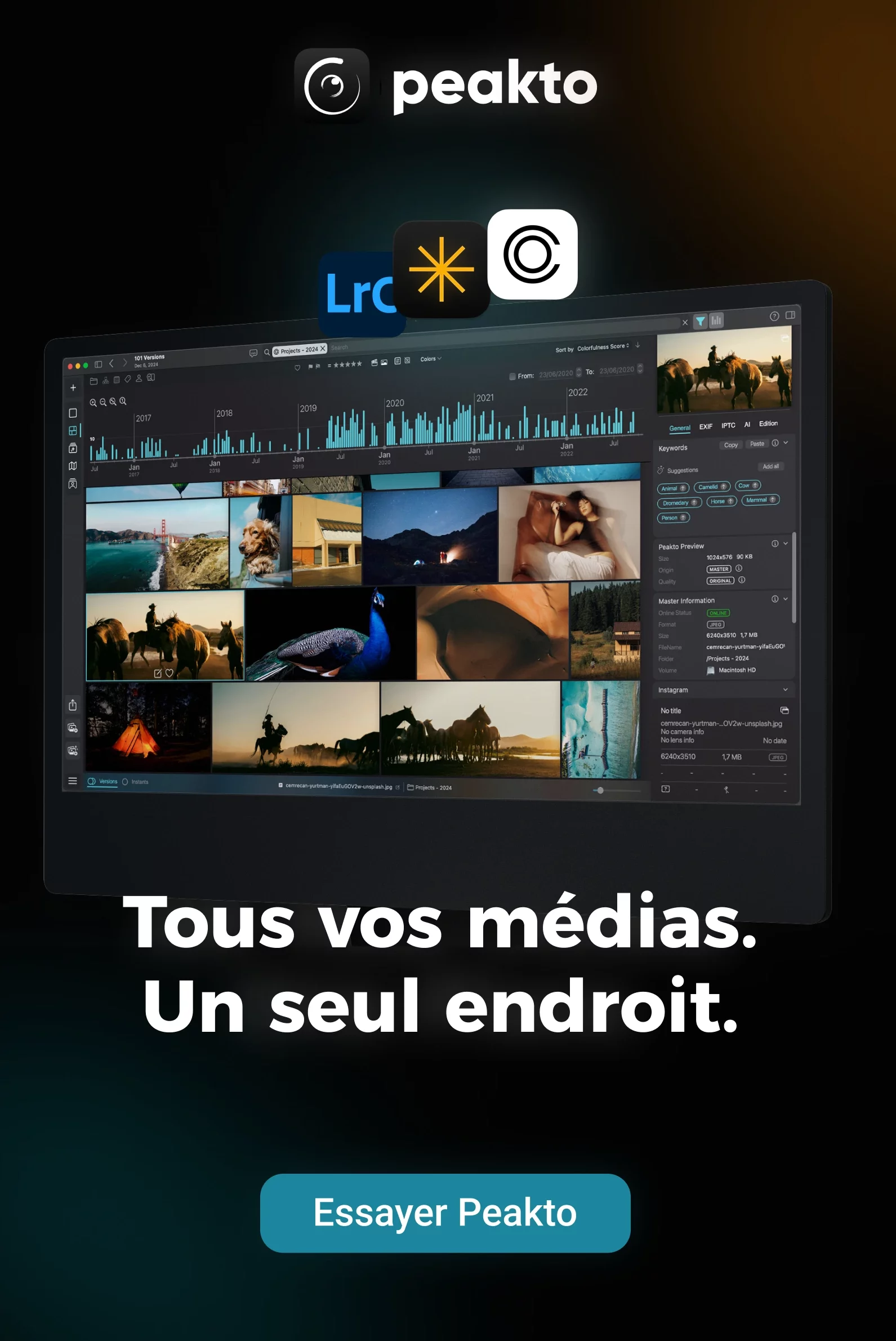Le logiciel de gestion de photos Peakto 1.0 Pic Saint Loup a été annoncé pour 2022. Nous vous proposons donc de vous faire découvrir au fil de quelques articles, le superbe univers du Pic Saint Loup, ce sommet emblématique de l’Occitanie dans le Sud de la France, tout près du siège social de CYME dans l’arrière pays de Montpellier.
Aujourd’hui nous allons a la rencontre de Sébastien Bouin le meilleur falaisiste français, professionnel et amoureux de sensations fortes . Il a ouvert sur la face Nord du Pic Saint-Loup une nouvelle voie d’escalade 9b/+. Il nous partage sa vision et les valeurs qu’il véhicule au travers de sa profession. C’est un immense plaisir pour nous de vous partager cette interview, d’une jeune et pourtant immense légende vivante de la grimpe. Nous remercions également l’équipe de Sébastien Bouin pour ces images sensationnelles qui nous ont été partagées.
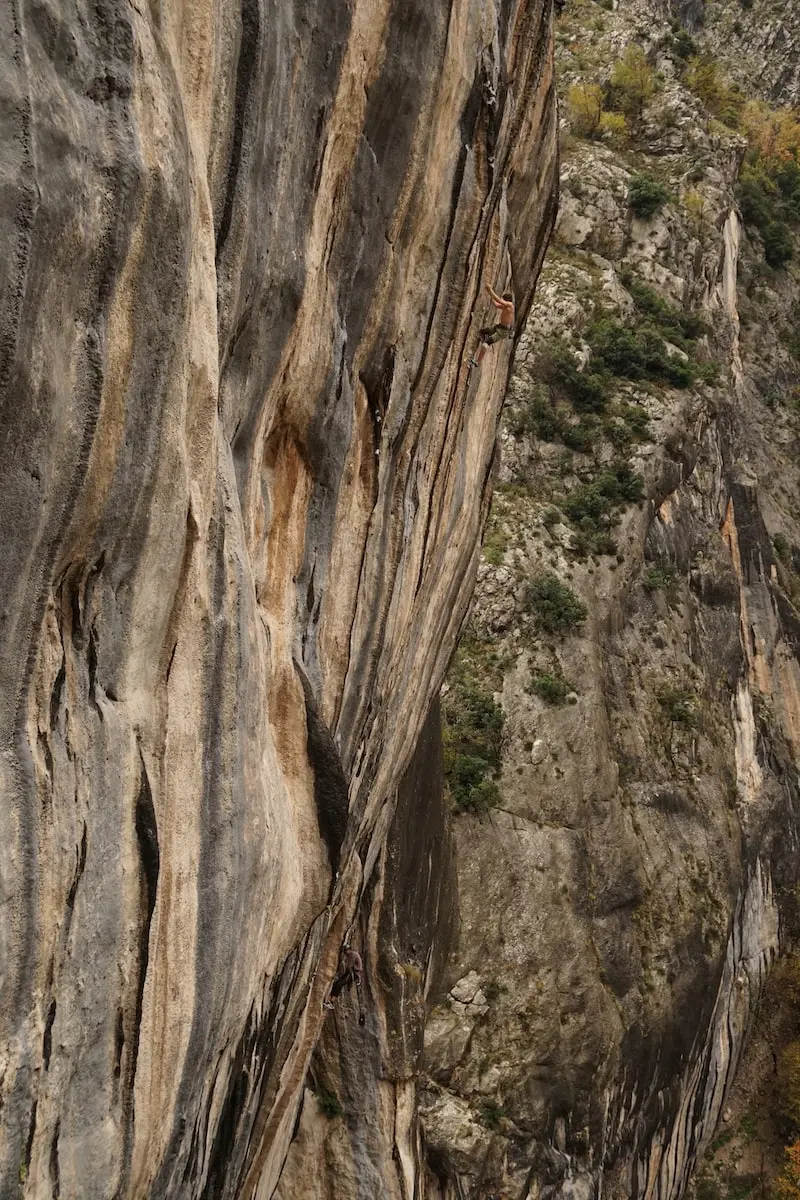
Pourquoi as-tu voulu pratiquer l'escalade? Qu’est-ce que tu aimes le plus dans ce sport ?
J’ai 28 ans et j’ai commencé l’escalade vers l’âge de 11 – 12 ans. C’est assez tard pour faire de l’escalade de haut niveau. A cet âge là, ceux qui constituent le top du niveau mondial étaient déjà très forts… J’ai donc commencé avec un peu de retard mais avec intensité et j’ai pu rattraper mon retard.
Actuellement, je voyage en France et à travers le monde pour réaliser les voies les plus dures possibles et je communique autour de mes aventures à l’aide de belles vidéos et de belles images pour donner envie aux gens.
Je trouve que l’escalade est un mix de differents aspects qui m’attirent beaucoup. Premièrement, l’aspect extérieur car nous sommes en pleine nature, dans des conditions sublimes qui nous font “voyager”. Les environnements de l’escalade sont vraiment très bucoliques et dépaysantes. À l’extérieur, dans des coins splendides, c’est là que je me sens bien.
L’autre aspect, c’est celui de la performance et du haut niveau. Nous nous trouvons toujours face à des challenges compliqués pour lesquels il est nécessaire de s’entraîner des mois et des mois avant d’y arriver. Le mix entre l’aspect sportif et l’aspect nature m’attire particulièrement. Il faut savoir également qu’en escalade chaque voie est différente, c’est un sport infini dans lequel on découvre toujours quelque chose de nouveau.
En escalade chaque voie est différente, c’est un sport infini dans lequel on découvre toujours quelque chose de nouveau. De plus, on a besoin de ses capacités mentales et physiques mais aussi de la technique pour arriver à accomplir une voie. Cela fait de ce sport, un sport très complet qui demande beaucoup de qualités.
« En escalade chaque voie est différente, c’est un sport infini dans lequel on découvre toujours quelque chose de nouveau. »
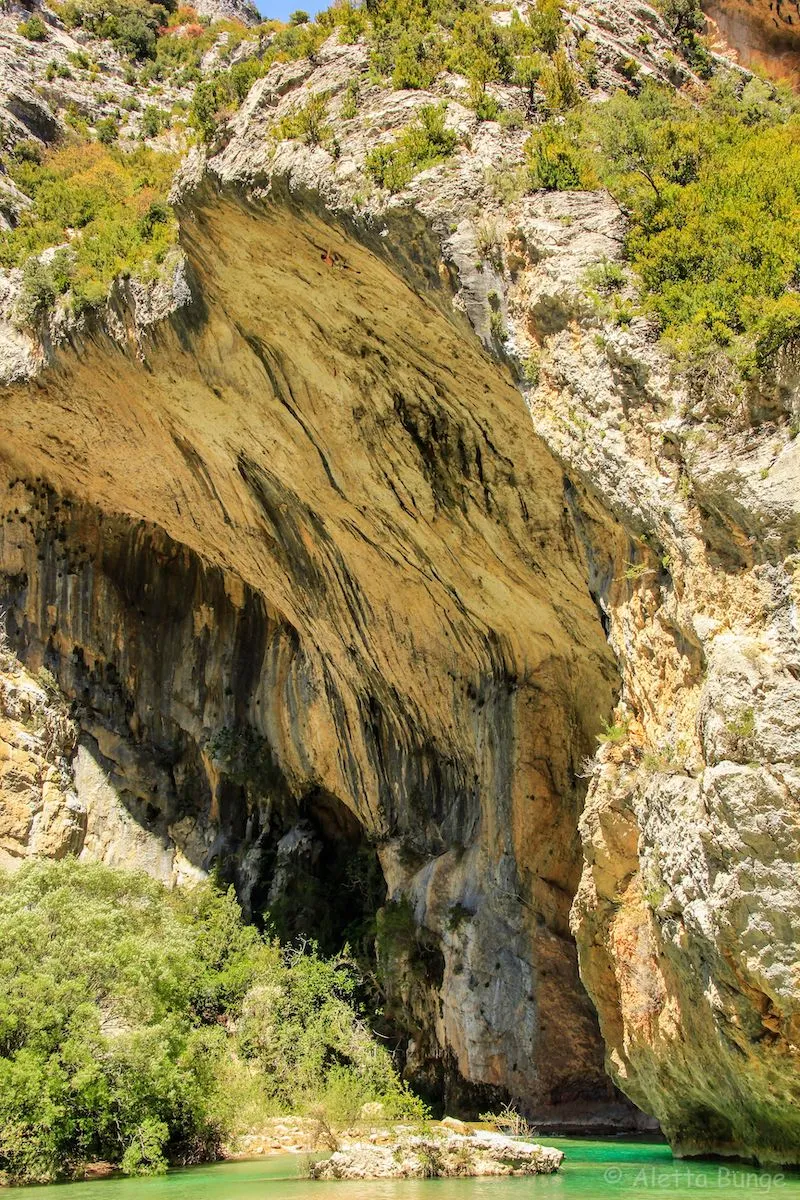
Peux tu nous partager tes réflexions sur le sujet de l’environnement et nous en dire un peu plus sur tes engagements/actions ?
L’escalade s’est beaucoup développée ces derniers temps grâce à la mise en avant pendant les JO mais aussi grâce à l’augmentation du nombre de salles d’escalade. En effet, chaque année des dizaines voire des centaines de salles ouvrent leurs portes en France.
Cela donne naissance à un nouveau bassin de grimpeurs, une nouvelle population qui n’est pas forcément éduquée en milieu extérieur et cela peut quelquefois être un problème.
Pour le moment l’augmentation de l’affluence ne gêne pas les autorités des régions ou secteurs concernés mais cela pourrait amener à faire fermer certains secteurs à terme. En effet les propriétaires ne vont pas accepter que leurs sites deviennent des décharges ou de subir d’autres nuisances.
Si on venait à protéger un site en particulier les grimpeurs se déplaceront sur d’autres sites et la problématique restera la même. Pour répondre à cette problématique quelques associations existent en France et organisent des événements de type “Cleanup Days”. Leur objectif est d’éduquer les gens et de nettoyer les différents sites.
Personnellement, pour faire prendre conscience de ce problème, je me permets de communiquer sur le respect de l’environnement, de la nature car je trouve que cela a plus d’impact que de faire mes actions seul de mon côté sans en parler.
J’ai aussi des partenaires comme des marques d’escalade ou de montagne qui partagent les mêmes valeurs et qui communiquent à ce sujet.
Je pense qu’il pourrait être intéressant de communiquer davantage encore dans les clubs d’escalade ou les associations à propos des conséquences des déchets sur la faune et la flore, sur l’environnement en général. L’escalade est un trop beau sport pour venir gâcher son image avec ce genre de choses et les fans d’escalade sont généralement très réceptifs aux messages concernant la protection des sites.
« Je me permets de communiquer sur le respect de l’environnement, de la nature, parce que je trouve que cela a plus d’impact que de simplement réaliser mes actions seul sans en parler. »
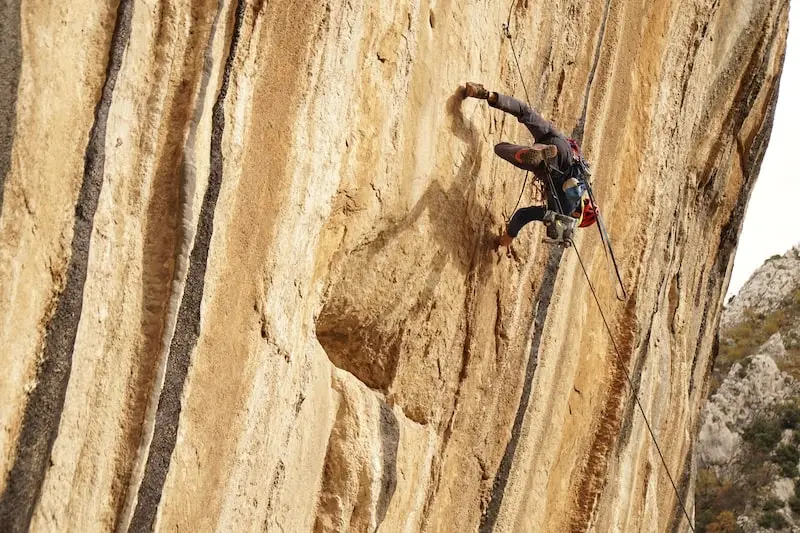
Tu voyages dans le monde entier pour explorer des sommets réputés pour leur difficulté. Et pour autant tu ouvres de nouvelles voies en région, nous laissant deviner un véritable attachement à la région de Montpellier. Peux-tu nous parler de ton inscription locale?
Nous habitons dans une région qui est parfaite pour faire de l’escalade. Si j’habitais à Dijon ou si j’habitais à Paris, cela serait bien plus compliqué de faire de l’escalade en falaise.
Cette situation est assez exceptionnelle parce que ça me permet d’alterner entre voyages et moments à la maison. C’est un équilibre qu’il faut trouver dans sa vie parce que si on est toujours sur la route, on se perd et c’est pas très bon.
L’Occitanie est une super région pour l’escalade en particulier de septembre à mai. L’été très chaud est une saison plus compliquée. La région est aussi très centrale, c’est un point de passage et est bien connectée avec, pas très loin, des gros aéroports comme Barcelone.
« Je voyage à travers le monde à la recherche des voies les plus dures, mais j’ai aussi cet environnement fantastique à la maison, en Occitanie. »
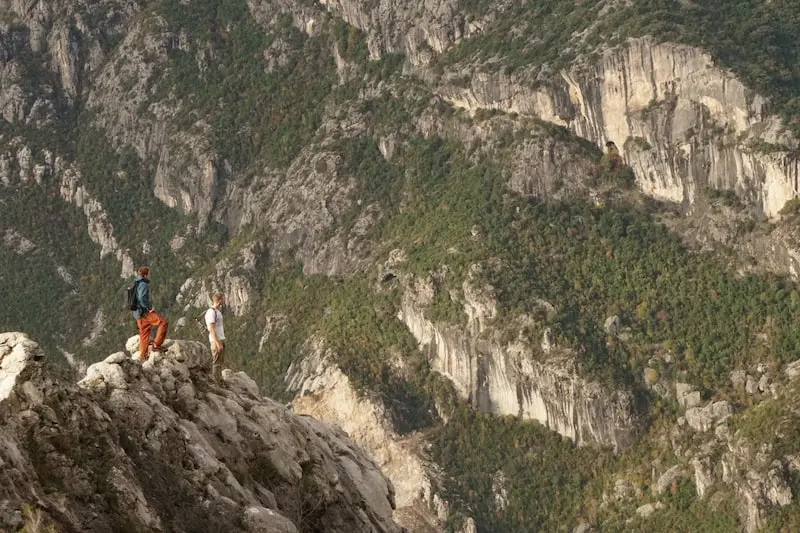
Les techniques d’escalade évoluent-elles depuis que tu pratiques ce sport? Y contribues-tu?
Les techniques d’escalade sur le rocher à proprement parler ont un peu évolué. Il y a quelques nouvelles orientations, des nouvelles prises, mais je dirais surtout que se sont les techniques d’entraînement qui ont changé.
L’apparition des salles d’escalade permettent de s’entraîner plus fréquemment, le soir, quand il pleut, sur des différents supports… Cela permet de développer beaucoup plus le physique et la quantité de grimpe. Grâce à cela, nous arrivons plus forts sur les projets en falaise.
Les styles de grimpe ont également bougé. Avant, on grimpait plutôt sur des murs verticaux possédant des toutes petites prises alors que maintenant on grimpe sur des murs penchés avec une gravité qui nous tire vers le bas.
Ce type de pratique de l’escalade est notamment apparu grâce à l’évolution des outils d’entraînement. Et puis, après il y a aussi l’amélioration du matériel avec par exemple l’évolution des chaussons d’escalade moins rigides qui permet de pousser le niveau un peu plus loin.
« Avant dans la conception de l’escalade, on avait peu de temps pour y arriver alors que maintenant on s’en fout : on peut se donner des années pour réussir. »

Par exemple, j’ai réussi la voie du Pic Saint Loup après 3 ans de travail. Au début je n’y arrivais pas du tout, puis l’année d’après, un peu mieux, jusqu’à y arriver…
Il y a une démarche de conceptualisation du geste qui mêle un travail sur le mental et surtout le corporel. On note toutes les sensations, les enchaînements qui deviennent de plus en plus faciles à faire. Petit à petit on arrive à aligner 1, puis 2… puis 30 gestes et à être de moins en moins fatigué.
C’est évidemment plus commode quand on habite pas loin de la falaise que l’on veut grimper. Quand on se déplace il y a plus de pression car on ne reste que quelques semaines sur site.
» Dans cette nouvelle conception de l’escalade, on cherche à dépasser les limites, toujours un peu plus loin encore. «
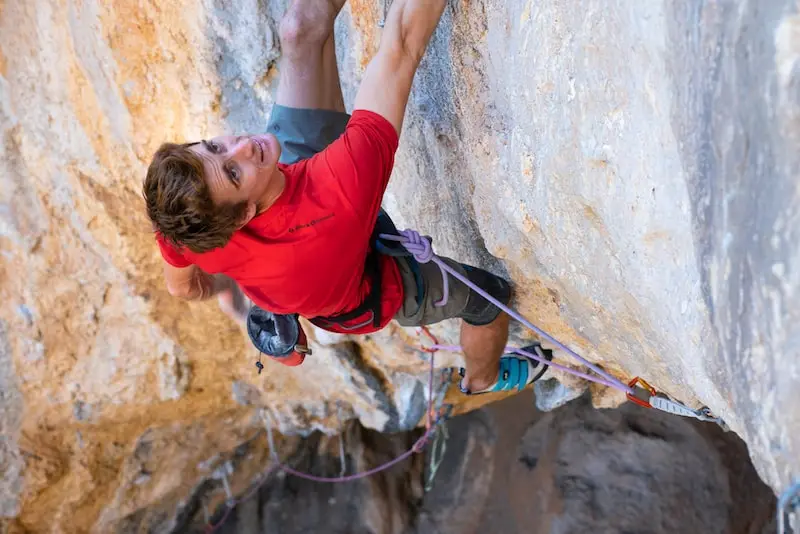
Quelles sont tes inspirations ? Qui sont les personnes que tu admires le plus ?
Quand j’étais petit, comme tout le monde j’aimais toutes les stars de l’époque qui partageaient de belles images et de belles vidéos.
Mais actuellement ce sont des personnalités plutôt que des stars qui m’inspirent, des personnes qui vont aborder le sport d’une manière un peu atypique. Le genre de personnes, professionnels ou amateurs, qui ont comme conception de ne jamais lâcher malgré la difficulté. Ce sont plutôt ces personnes avec ce genre d’état d’esprit qui m’inspirent même s’il y a évidemment des amis stars qui sont très forts.
Quelles sont les autres activités que tu pratiques en dehors de ce sport ?
L’escalade me prend énormément de temps, mais j’aime beaucoup tout ce qui est randonnée en montagne. J’ai pratiqué aussi pas mal de sports d’extérieurs comme le vélo, mais si j’avais plus de temps j’aimerais faire du ski et du surf.
Vous aimez l'interview de Sébastien ?
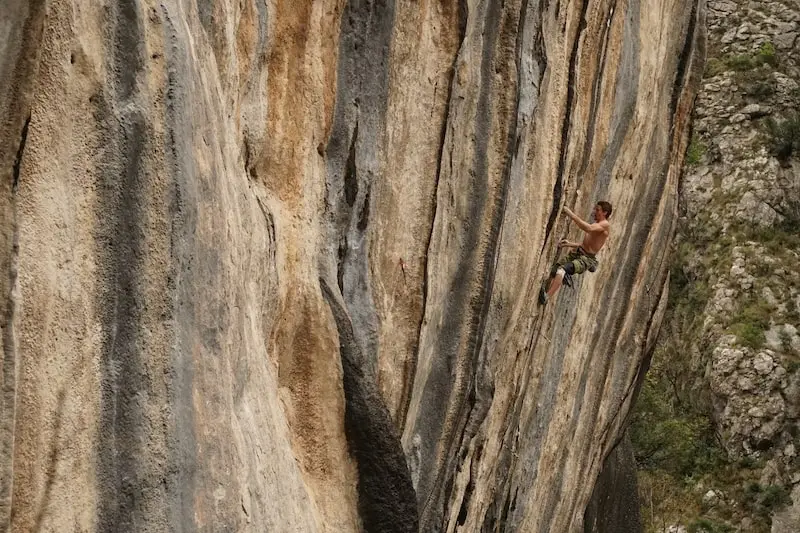
Il parait que l'escalade telle qu'elle a été présentée aux J.O a fait débat dans la communauté des grimpeurs. Quel est ton avis à ce sujet?
Culturellement, ce sport a toujours été pratiqué en extérieur mais il s’est transformé en sport d’intérieur pour la compétition. Le problème c’est qu’il est difficile de trouver de nouvelles falaises à chaque fois et les personnes venant d’un pays avec beaucoup de falaises peuvent s’entraîner plus souvent que d’autres. C’est pour cela qu’ils ont créé des nouveaux murs artificiels. Depuis lors, il y a deux disciplines distinctes, l’escalade avec corde où le but était d’aller le plus haut possible et l’escalade de bloc où le but est de faire le plus de mouvements dans les blocs. Cette façon de faire correspondait à ce que nous pouvions pratiquer en extérieur avec d’un côté l’endurance et de l’autre la puissance.
Peu avant les JO est arrivée une nouvelle discipline qui est l’épreuve de vitesse qui n’avait jamais vraiment été pratiquée dans la culture de l’escalade. Avant les JO, cette nouvelle discipline faisait déjà polémique. La vitesse n’était pas une donnée centrale dans la pratique de l’escalade.
Ce qui pose donc problème c’est que cette nouvelle discipline est née pour la compétition et non pas de la culture de l’escalade. C’est comme si un nouveau sport était né.
La voie de vitesse est toujours la même, elle ne change pas. Nous pouvons comparer cela à un 100m et les personnes s’entrainent toujours sur la même voie alors que les deux autres disciplines demandent toujours une capacité d’adaptation ou de prise de risques.
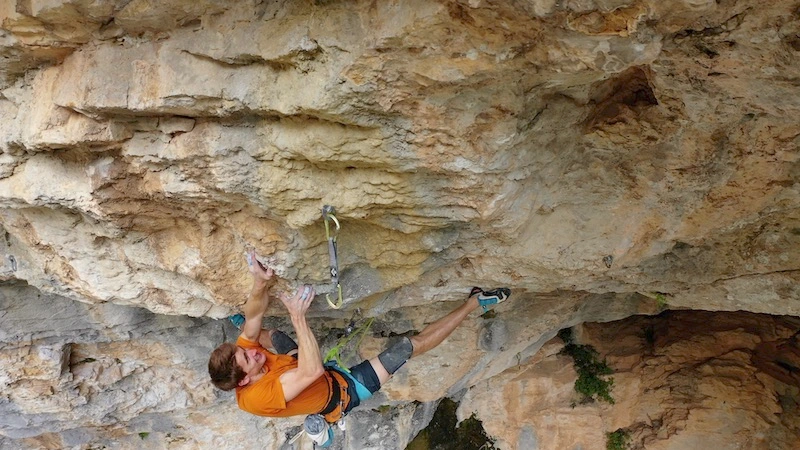
Le problème, c’est que pour l’intégration au JO, il n’y avait qu’une médaille. On a voulu combiner les 3 disciplines en une seule. L’épreuve de vitesse a été choisie car jugée plus impressionnante pour un public qui ne connaît pas bien l’escalade.
Du coup tout le monde a dû se mettre à la vitesse mais avec des résultats très aléatoires le système de point n’était pas très abouti. Au final cette épreuve des JO est jolie pour le spectacle mais pas très représentative de ce qui se fait vraiment en escalade.
En 2024 il aura deux médailles. Une pour la vitesse et une pour le combiné Blocks & Voie. C’est mieux mais je trouve dommage que la vitesse monopolise une des deux médailles. On verra comment les choses évolueront encore dans le futur.
Pour ma part, je me concentre sur la pratique de l’escalade en extérieur.

Ouvrir de nouvelles voies en escalade est une démarche bien particulière. Serait-ce l’innovation à l'échelle du grimpeur? Que recherches-tu au travers de cet exercice?
L’ouverture de voies c’est encore autre chose et ma façon de la pratiquer est aussi très particulière. Une ouverture basique, ce séquence ainsi: on voit une falaise qui paraît intéressante, on voit une ligne (ligne de faiblesse ou ligne de prises) et on va essayer de la grimper.
Pour ma part, je recherche les voies les plus dures et la limite est mince entre “c’est trop facile” et “ça ne passe pas”. Parce que je recherche vraiment la difficulté, c’est compliqué de trouver des lignes inspirantes, avec le bon niveau de difficulté et surtout des prises naturelles. Le Pic Saint Loup en est un bel exemple.
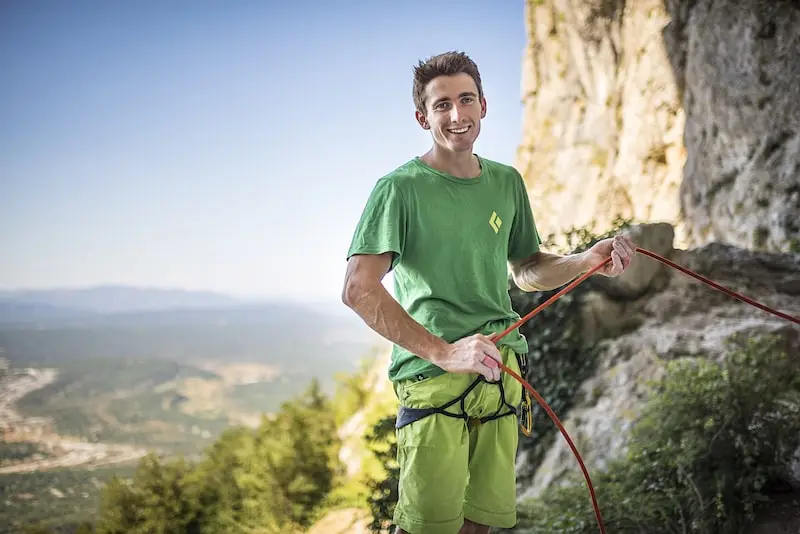
L'ascension du Pic Saint Loup a dû être un challenge. Raconte-nous cet exploit... Comment t’est venue l’idée? Combien de temps de préparation cela t’a demandé?
L’idée m’est venue car la voie était déjà là. C’est Cédric Ferraro qui l’avait révélée. J’avais déjà réalisé toutes les voies dures à côté de la maison. Là je cherchais vraiment quelque chose d’encore plus dur et de nouveau. Je savais que cette voie existait et je suis allé la voir. Cédric Ferraro l’avait juste équipée mais ne l’avait pas grimpée.
Quand je suis monté pour la première fois, j’ai trouvé ça très, très difficile et je n’arrivais pas à faire les bons mouvements mais je me disais “ça peut marcher, ça peut le faire”.
De plus, une voie comme celle-là à côté de la maison c’est vraiment parfait car on peut revenir de temps en temps, essayer de comprendre un peu mieux, essayer d’être plus fort. C’est ainsi que à force de travail et d’investissement j’ai pu réussir, au bout de 3 ans, à grimper cette voie particulière du Pic Saint Loup. En ce sens ça a été une chance de l’avoir à côté de chez moi. J’espère maintenant que d’autres grimpeurs de partout dans le monde viendront la tenter!
Réaliser un exploit professionnel comme l'ascension du Pic Saint Loup inspire et motive des milliers de passionnés. Comment parvenez-vous à communiquer dans le monde entier et à inviter d'autres grimpeurs à évaluer votre nouvelle voie ?
Dans le monde de l’escalade, il est assez facile de communiquer. Lorsque vous réalisez une bonne performance, les médias relaient souvent l’information. Il est bon d’avoir des vidéos et des photos inspirantes pour que les gens puissent voir à quoi ressemble l’escalade. C’est ce qui donne envie aux gens de le faire.
Les partenaires nous aident aussi à diffuser l’information, car certains d’entre eux ont une grande communauté qui les suit. J’essaie également de diffuser l’information auprès d’une liste de médias qui ne sont pas nécessairement spécialisés dans l’escalade.
Je travaille également avec un manager qui s’occupe un peu de tout cela afin de partager l’information, de diffuser les images et les vidéos et d’intéresser les gens.
« Le public aime regarder une vidéo avec une bonne histoire, et les exploits inspirent un peu tout le monde. »
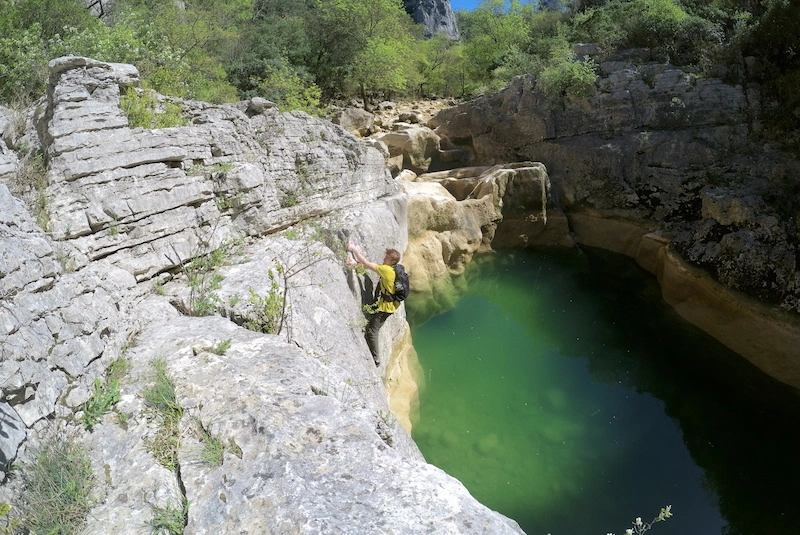
Tu es considéré comme un des meilleurs grimpeurs mondiaux. Comment fais-tu face à ce succès ?
Premièrement, j’essaie de rester authentique et réel sur l’approche de l’escalade et des gens. Je pense que c’est ça qui amène ma touche personnelle et qui fait que certaines personnes s’attachent au personnage que je représente. C’est ma manière d’être et je n’arriverais pas à me détacher de ça. Si je surjouais, je pense que je ne me sentirais pas bien. C’est important d’être soi-même. Les réseaux poussent à transformer un peu qui on est, à toujours en faire un peu plus, à communiquer trop sur des choses qui sont en fait juste normales.
Le but pour moi, c’est de trouver un juste milieu. Effectivement, il faut parler de soi, il faut se mettre en avant, c’est le jeu. Il y a d’autres grimpeurs ou d’autres partenaires et mine de rien il y a un petit jeu de concurrence. Si on se met en avant , on met en avant aussi ses partenaires. Il faut donc le faire intelligemment pour garder son authenticité et ce n’est pas facile.
Pour ma part, la communication est un sujet qui ne me passionne pas énormément. Ce que j’aime plutôt faire, c’est grimper. Mais cela fait partie du job. Et donc, je ne sais pas si c’est ce qu’on appelle “faire face à son succès” mais effectivement, il y a un réel aspect public. Quand je vais m’entrainer dans une salle d’escalade je n’ai pas forcément des relations toujours “réelles” avec les gens. L’image que je représente peut quelques fois interférer. Je suis quelqu’un d’assez jovial donc ça passe bien, mais il y a toujours un peu cet aspect là à gérer. Ce n’est pas non plus George Clooney qui se balade dans la rue, mais il y a quand même une petite part de challenge à trouver le juste milieu entre authenticité et image extérieure.
Enfin, je vais relativiser la question. Mon succès n’est pas non plus délirant, dans le sens où je ne suis pas en finale de Coupe du monde de football. C’est quand même encore bien sous contrôle.
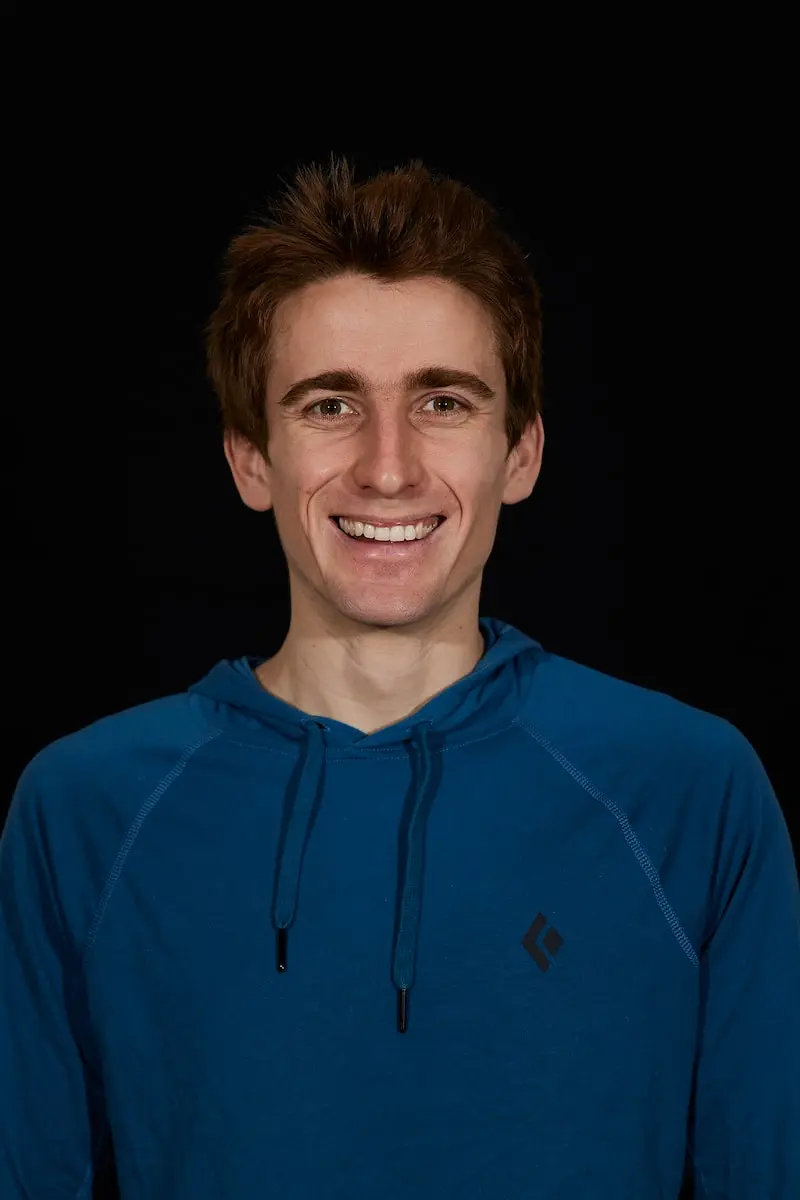
Thibaut Marot ou d’autres photographes te photographient régulièrement lors de tes différents projets, que représentent ces photos pour toi ?
Les photos ou vidéos représentent beaucoup pour moi parce qu’elles me permettent de communiquer. Elles permettent de laisser une trace, d’exporter ce que l’on a accompli. En escalade, il n’est pas possible de suivre nos exploits en direct. Les photos ou les vidéos sont donc absolument essentielles.
Les photographes et caméramen sont vraiment des personnes sans qui je ne pourrais pas travailler. S’ils ne sont pas là, je ne peux pas partager mes exploits. La parole ne suffit pas, il faut l’image.
Je dirais même que les images sont presque plus essentielles que la réalisation de la performance. De nombreux grimpeurs de “haut niveau en extérieur” se reconvertissent en “découverte exploration du milieu”. Ils sont moins dans la performance que dans la découverte. Ils font de superbes vidéos, de superbes images, et les gens les suivent également avec plaisir.
Même les grimpeurs de haut niveau aiment bien les suivre. Et moi aussi ils peuvent quelquefois me faire rêver…Donc oui, la photo et la vidéo sont essentielles pour l’escalade.
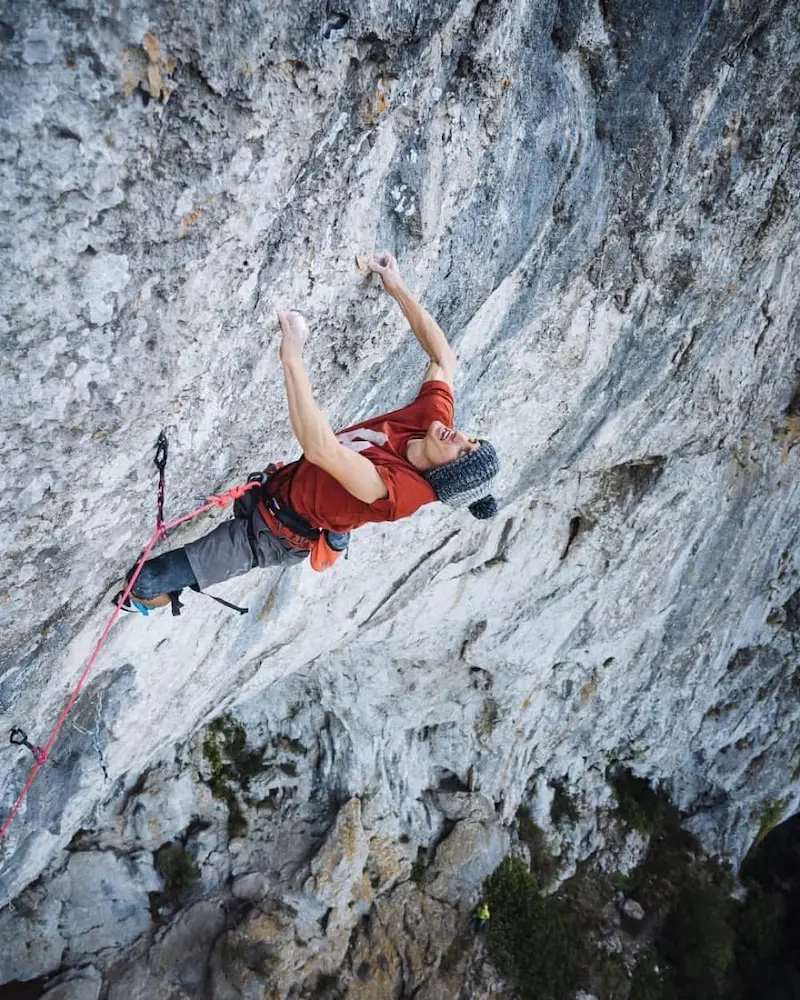
Quelle est la meilleure expérience que vous ayez vécue en tant que grimpeur professionnel ?
J’ai eu de nombreuses expériences d’escalade mémorables mais je crois que c’est surtout le cheminement à parcourir qui m’intéresse. On part d’un objectif qui paraît impossible. On part de très loin, on n’arrive même pas à faire les premiers mouvements ou enchaînements, et, petit à petit, avec un processus de travail, un processus de découverte et un processus d’entraînement, on arrive à faire des mouvements et à faire cette voie au finale. Quelques fois il faut dix jours pour intégrer un seul mouvement quand il y en a plus de 30 à enchaîner…
C’est un peu comme si, un jour, je décide que je veux passer en dessous des 10 secondes au 100 mètres alors que je suis à 25 secondes. Le succès paraît tellement loin et impossible. On se dit “pourquoi je fais ça” mais on continue.
On tient encore, on gagne enfin quelques secondes et en faisant cela, tout va beaucoup mieux. Et petit à petit, on arrive à faire ce que l’on veut. Quelques fois, quand je suis proche de la réussite, je me projette en arrière et je me m’émerveille de tout ce chemin de transformation qui a été déjà parcouru. C’est un sentiment qui peut être accessible aux amateurs comme aux professionnels.
Évidemment, comme les pros consacrent plus de temps à l’exercice, cela accentue ce processus. On peut chercher des choses encore plus loin et plus dur parce qu’on a plus de temps pour les travailler, plus de temps pour s’entraîner.
Cette interview vous inspire ?
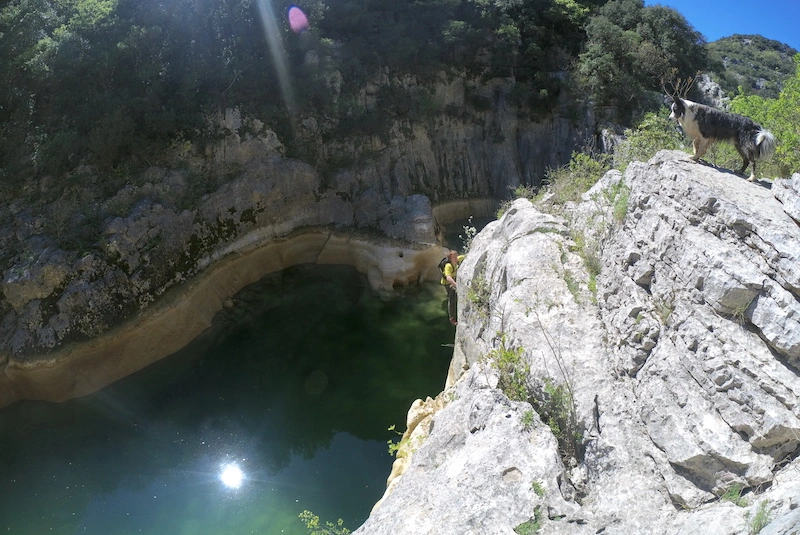
Comment progresse-t-on, comment se transmet le savoir en escalade?
Le savoir se transmet beaucoup par la pratique. En regardant les gens qui grimpent un peu mieux, on apprend certaines choses.
Plus que sur les mouvements spécifiques en soi, il y a beaucoup à apprendre sur la façon de grimper, sur la façon de mettre du rythme dans une voie, d’accélérer, de décélérer, sur les façons de prendre des risques, de pousser sur les jambes, de faire un mouvement de manière très lent, puis un mouvement de manière très dynamique.
En escalade, ce qui compte c’est la façon dont on va prendre l’information, la façon de la traiter, d’anticiper l’action, de mémoriser l’action. On est donc sur l’aspect tactique avec la gestion et la position du corps plutôt que sur un mouvement en soi. Les mouvements sont en effet tellement variés avec des combinaisons infinies de positionnements des mains et des pieds. Ce sont tous ces concepts qu’il est intéressant de travailler.
» En escalade, ce qui compte c’est la façon dont on va prendre l’information, la façon de la traiter, d’anticiper l’action, de mémoriser l’action… «
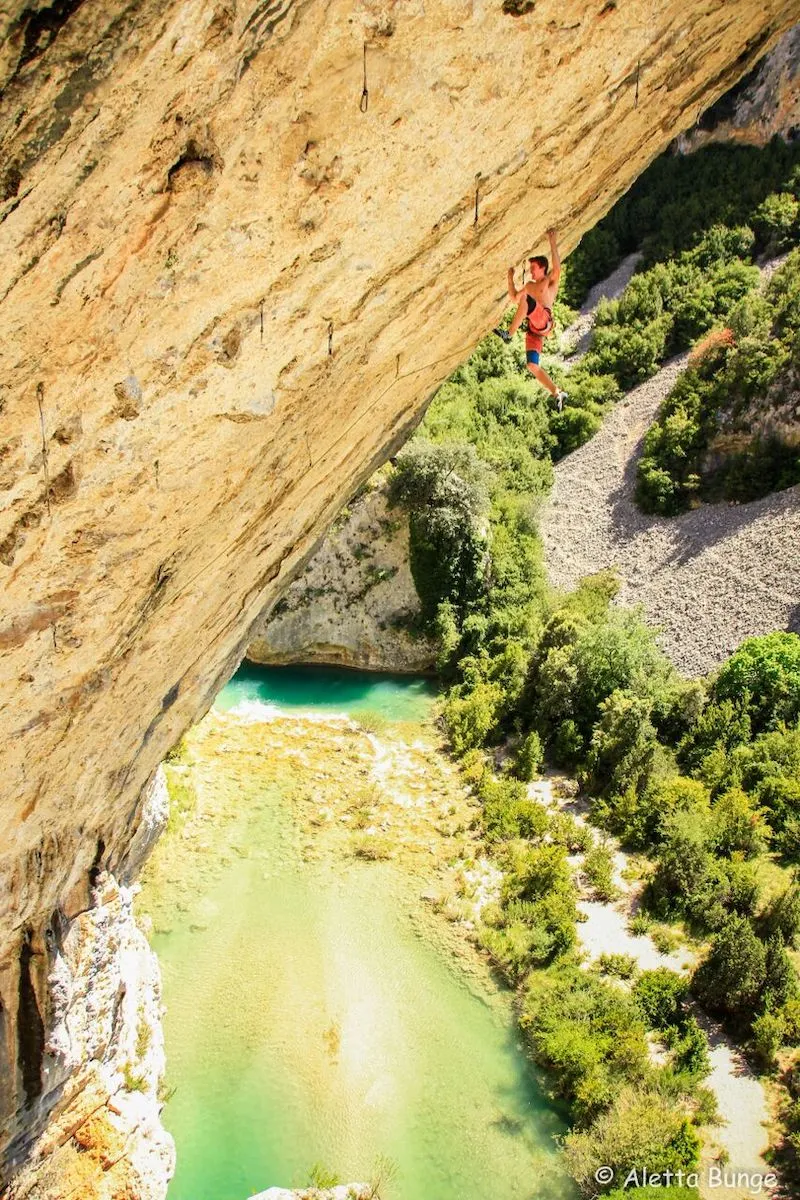
L’expérience que tu as acquise motive sans doute les futures générations. Que peux-tu conseiller aux grimpeurs amateurs ou autres sportifs pour “réussir” dans son domaine?
La motivation est le maître mot. Même si on n’est pas doué à la base, si on est motivé, si l’escalade nous plait vraiment et nous transporte, si on s’investit à fond, alors forcément on va capter des trucs et on va progresser. Il faut aussi trouver un équilibre, psychique et physique.
Tenir dans la durée et progresser sur le long terme n’est possible que si on a trouvé un certain équilibre. On peut être deux ou trois ans à fond en donnant tout ce qu’on a dans la vie pour continuer, mais si derrière, on n’a pas un équilibre de vie qui permette de maintenir l’envie et de maintenir le cap, ça va être compliqué et ça aura un impact sur la motivation également. Donc oui, essayez de vivre votre envie à fond et trouvez également l’équilibre qui vous convient.
« N’ayez pas peur d’aller voir au-delà, de casser les barrières qui ne demandent qu’à être surmontées. »
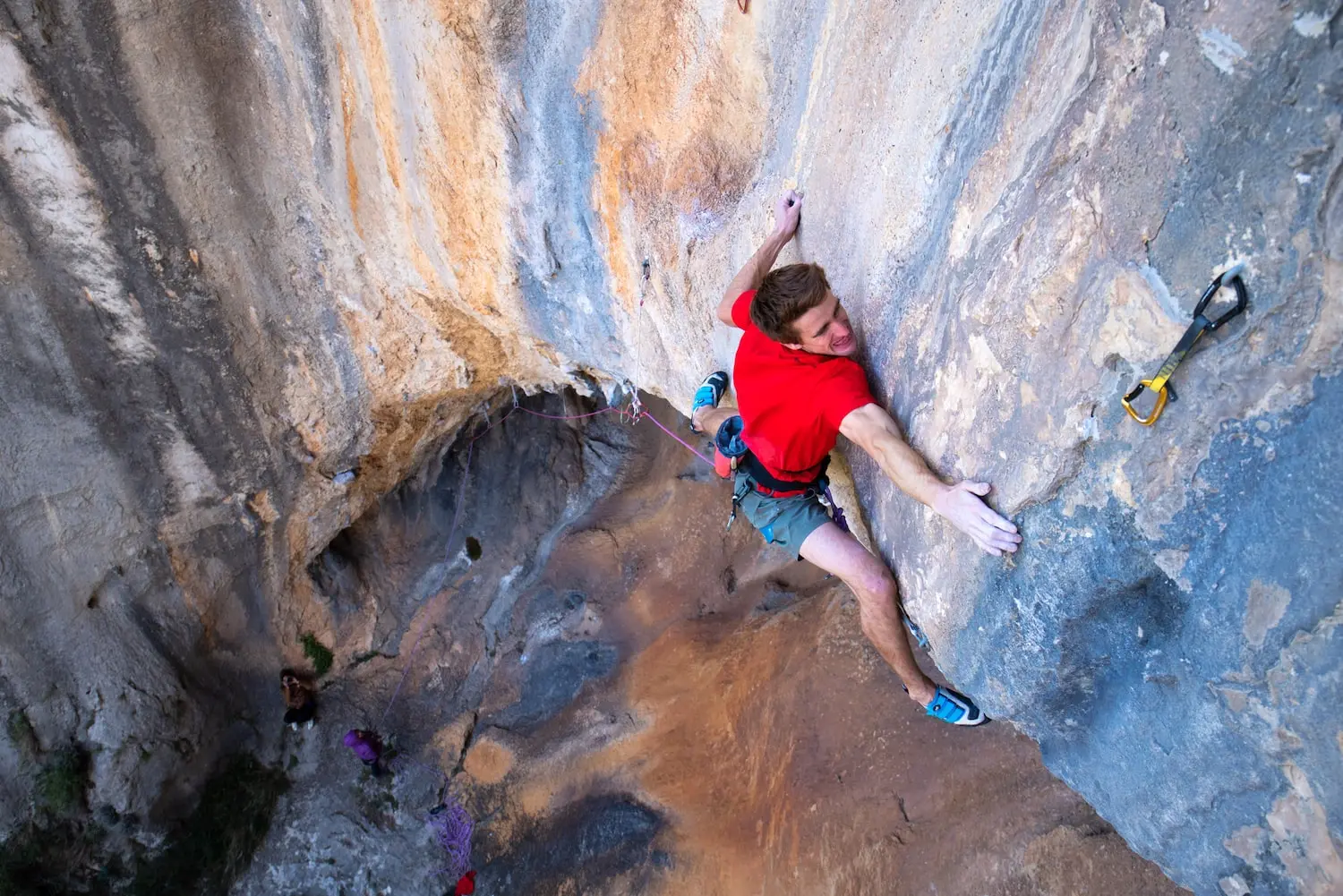
CYME tient à remercier tout particulièrement Sébastien Bouin de nous avoir accordé le temps de cette interview entre ses multiples projets. Sa recherche du surpassement de soi mais aussi son authenticité, sa générosité dans le partage nous ont réellement impressionnés. Nous applaudissons également son engagement particulier envers la durabilité et la préservation et la protection de l’environnement.
Chez CYME, nous partageons toutes ces valeurs, car nous nous efforçons d’aider notre communauté à préserver la beauté et la sérénité de notre planète, des lieux uniques comme le Pic Saint Loup, et à faire de son homonyme, Peakto 1.0 Pic Saint Loup, le meilleur qu’il puisse être.
Prolongez ce moment passé avec Sebastien Bouin en le suivant sur son compte Instagram.
Par ailleurs, nous vous invitons également à lire la très belle interview de Thibaut Marot, un des photographes de Seb Bouin.
Crédits photo: Aletta Bunge, Thibaut Marot, Semicontinuous, Tilby Vattard, Simon Barrau, Franck Andolfatto, Raphael Fourau.
Crédits vidéo: Raphael Fourau & Yucca Films.



